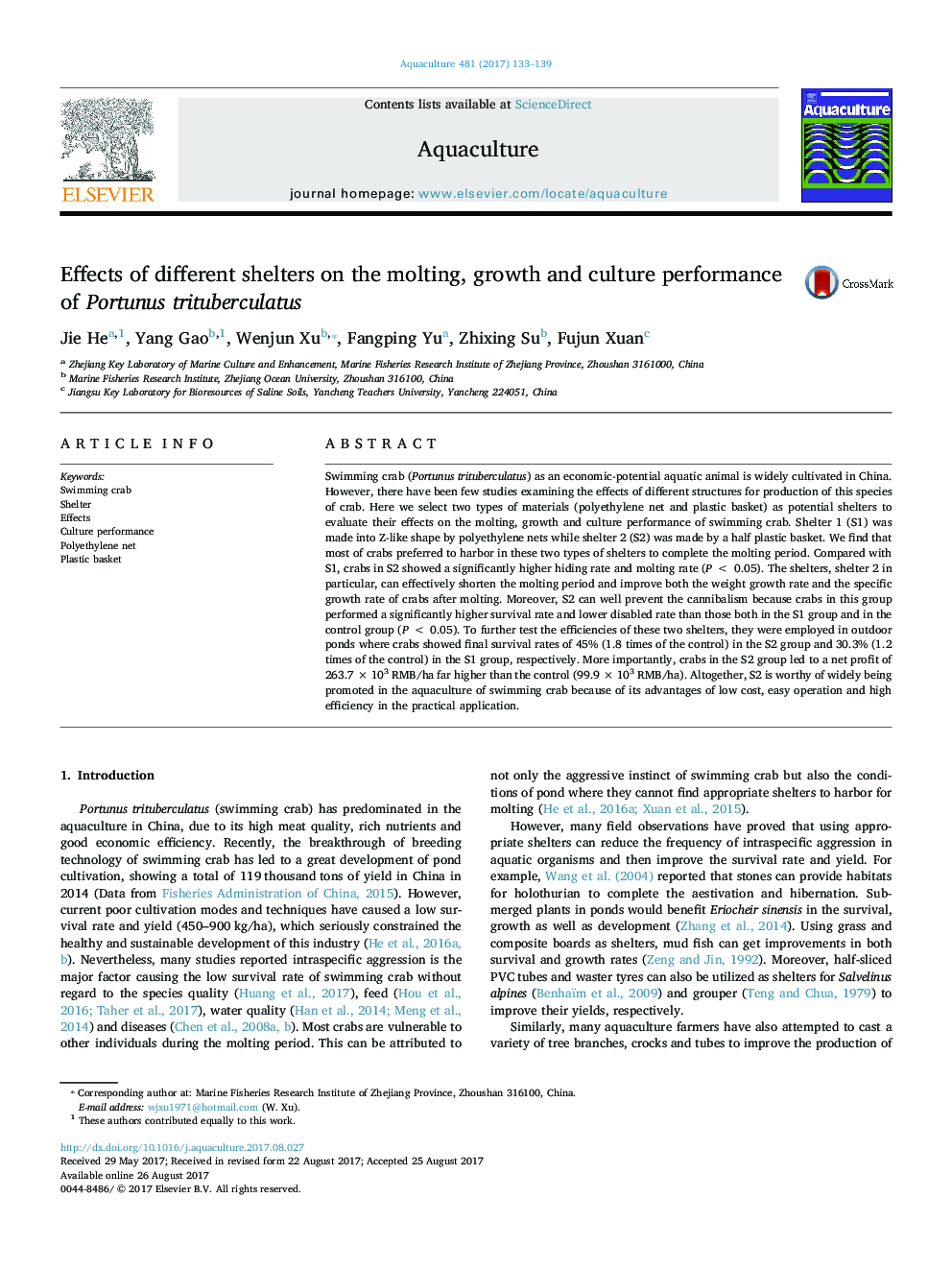| Article ID | Journal | Published Year | Pages | File Type |
|---|---|---|---|---|
| 5538974 | Aquaculture | 2017 | 7 Pages |
Abstract
Swimming crab (Portunus trituberculatus) as an economic-potential aquatic animal is widely cultivated in China. However, there have been few studies examining the effects of different structures for production of this species of crab. Here we select two types of materials (polyethylene net and plastic basket) as potential shelters to evaluate their effects on the molting, growth and culture performance of swimming crab. Shelter 1 (S1) was made into Z-like shape by polyethylene nets while shelter 2 (S2) was made by a half plastic basket. We find that most of crabs preferred to harbor in these two types of shelters to complete the molting period. Compared with S1, crabs in S2 showed a significantly higher hiding rate and molting rate (PÂ <Â 0.05). The shelters, shelter 2 in particular, can effectively shorten the molting period and improve both the weight growth rate and the specific growth rate of crabs after molting. Moreover, S2 can well prevent the cannibalism because crabs in this group performed a significantly higher survival rate and lower disabled rate than those both in the S1 group and in the control group (PÂ <Â 0.05). To further test the efficiencies of these two shelters, they were employed in outdoor ponds where crabs showed final survival rates of 45% (1.8 times of the control) in the S2 group and 30.3% (1.2 times of the control) in the S1 group, respectively. More importantly, crabs in the S2 group led to a net profit of 263.7Â ÃÂ 103Â RMB/ha far higher than the control (99.9Â ÃÂ 103Â RMB/ha). Altogether, S2 is worthy of widely being promoted in the aquaculture of swimming crab because of its advantages of low cost, easy operation and high efficiency in the practical application.
Keywords
Related Topics
Life Sciences
Agricultural and Biological Sciences
Aquatic Science
Authors
Jie He, Yang Gao, Wenjun Xu, Fangping Yu, Zhixing Su, Fujun Xuan,
